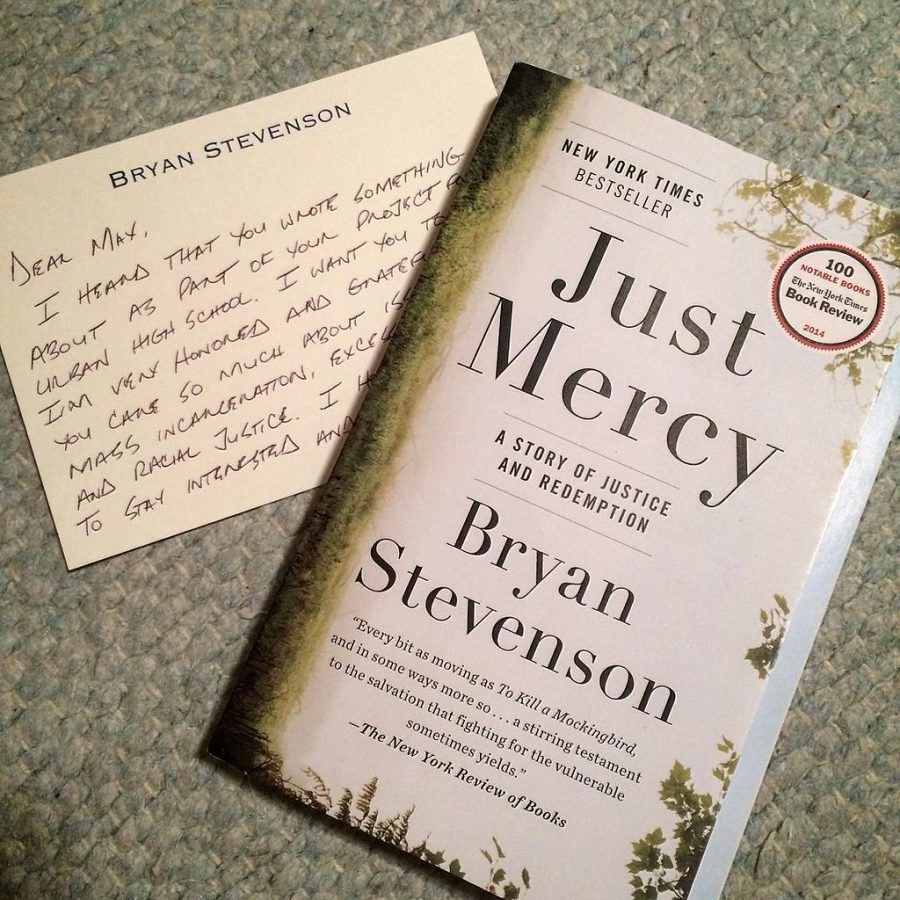“Just Mercy”, a story of forgiveness, redemption and justice
WSS critic Renee Gould ’22 looks into the differences between the book and the movie “Just Mercy.” This review contains spoilers.
“Just Mercy,” the movie, is a story of something insurmountably broad pulled into the eerily specific. The movie roars about justice and mercy, bashes at preconceived notations and leaves you with the tang of hope in your mouth. It follows two stories, that of Herbert Richardson and Walter “Jonny D” McMillian, and tells of both failures and successes, with Stevenson failing to save Richardson and just barely managing to save McMillian.
There are a few key moments that are unforgettable. First, the death of Richardson. The moment just before electricity ends his life, he breathes slowly and deeply, just as McMillian had told him to do the previous night when Richardson’s PTSD kept him awake. Though the movie leaves out many important aspects of Richardson’s case that made it so heartbreaking, the story of this Vietnam war veteran whose PTSD drove him to do something horrific he never forgot makes the moment he died horrendous.
Next is the moment wherein the prosecutor of McMillian joins the defense in dropping all the charges. This is a moment of utter redemption, despite the fact it’s not rooted in reality. This moment humanized the villains of this story, making it absolutely clear; they are also human. This moment makes you remember, that at its most basic, “Just Mercy” is a story about people and redemption. And that no one, on either side, is unforgivable.
However, the movie does not do the book justice. The book tells much more about the actual cases of each of the main characters in the movie, and more clearly underlines how people’s notation of the South is warped, particularly by those in the South. One major instance of this, is when the book describes a white woman asking Stevenson if he’s gone to the Mockingbird Museum in Monroe Ville. This happens in the movie, but the book goes into how truly absurd and heart-wrenchingly ironic this line is.
As well, the movie portrays death by electrocution as being a one-time shock and at least relatively peaceful, while the book delves into the full horror and pain of this method, all through the lens of watching Richardson dying. I can excuse this, as showing this visually would be crossing a major line, and might’ve detracted from all the other ideals the movie tries to highlight.
After reading the book and watching the movie, I believe that the best thing to do is simple. Read the book first, and then watch the movie. This means that you’ll already know about each of the cases and will already understand the full gravity of the movie. Then, watching the movie, you’ll have a better appreciation for many of the book’s scenes now that you can visually see them happening. In addition, the movie ends with a moment of redemption for the villains, allowing the movie to be far less polarizing than the book.
Your donation will support the student journalists of West High School. Your contribution will allow us to purchase Scholarship Yearbooks, newsroom equipment and cover our annual website hosting costs.

(all) Renee Gould is a senior at West, it is their third year on staff and is currently the opinion editor for the online publication.




